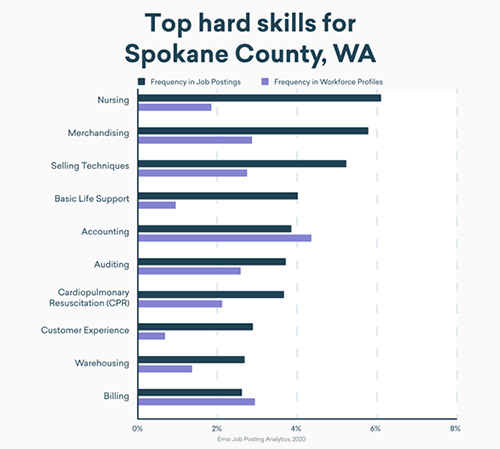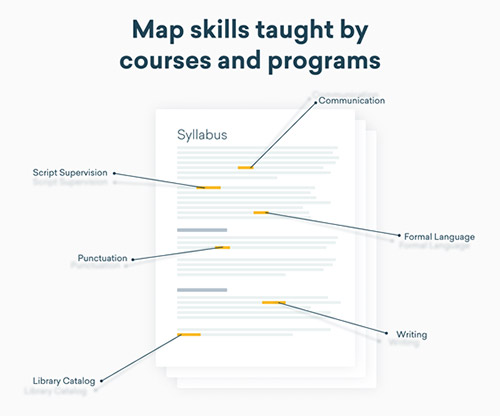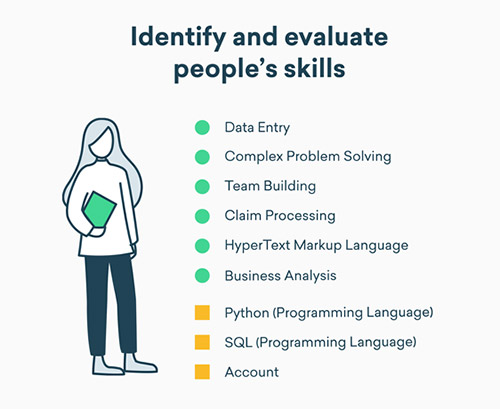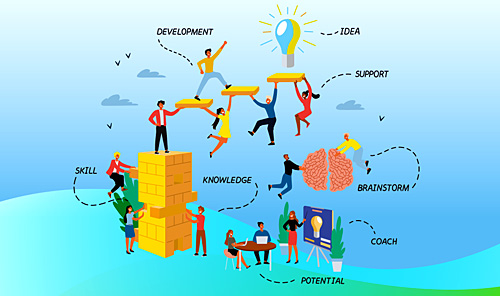That is, how a community responds and recovers from this crisis will signal to a business whether it’s the kind of community they want to be a part of. Does it have the good bones that can support their operations for years to come — and through another crisis? For example, on the workforce front, quickly getting people back to work is a noble endeavor. But communities that go a step further, turn this catastrophe into an opportunity and reimagine their workforce development to meet the market demand. Such communities are likely doing more for their recruitment efforts than they can imagine.
Since talent will continue to be the primary factor driving site selection decisions, it’s worth looking closer at how workforce development efforts post-COVID can provide that signal to businesses and site selectors. If you’re a community representative, there are three things that can be done to not only achieve your near-term goals of recovery, but also demonstrate to future clients that you’re thinking long-term. At the same time, these are the things companies and site selectors should be looking for when they make site decisions in 2021 and beyond.
Make Data-Informed Decisions
In the early stages of the pandemic, quick action was needed. In hindsight, many communities can look back and criticize whether the action taken was good or bad. But the quality of those decisions likely depended on the quality of information had at the time. And, unfortunately, quality information was pretty spotty early on.
Where companies will locate in the coming years will depend a lot on what they see communities doing now — or at least it should. But now that some of the dust has settled, communities and their leaders need to be making data-informed decisions. Workforce programs and policy decisions should be driven by data on a region’s talent shortages and opportunities. Job postings are a great place to start, providing a real-time indicator of sectors that remain at risk and those that are recovering. While traditional LMI (labor market information) tells us what businesses have done, job postings tell us what they intend to do. Communities that assess their situation based on where they’re going, not on where they’ve been, will be ahead of the curve.
Using job postings data is a great step to take in recovery. It can clearly direct where to connect dislocated workers to opportunities. This reemployment work is where many communities are focused, and rightfully so. But it shouldn’t be where they stop.
One of the effects of the pandemic is that it accelerated existing workforce trends: automation, remote education, and outdated workforce systems were all forces that communities needed to address; they now just have to do it faster. And so communities will set themselves apart if they use this as an opportunity to prepare for the future of work that has now been placed on their doorstep.
One way to do this is to incorporate skills data into strategy and decision-making. With the nation’s largest employer recently placing an emphasis on skills-based hiring, skills have been cemented as the language used in the labor market. It only makes sense then that state and local leaders should use skills data as they create strategies, programs, and policies. Even a quick and high-level look at a region can reveal skill gaps present in job postings versus the skills of workers.

Aligning Training and Education Programs
When researching communities, another component site selectors should hope to see or hear about is an alignment of training and education. As communities have attempted to rapidly reemploy their workers, disjointed training and education systems have been exposed. This was one of those trends that was already an issue pre-COVID, but which is now more urgent.
With job-seekers desperately needing to determine their next step, they need to be confident that if they choose to get more training, it will be worth the time and money, and that the system they step into is well-suited to prepare them for the new economy.
Workforce programs and policy decisions should be driven by data on a region’s talent shortages and opportunities. This is again where the language of skills comes into play. Communities need to evaluate their spectrum of offerings, and the evaluation should be done based on the language of skills. This may require some heavy lifting: determining the actual skills being taught by each course or program. But again, because skills are the language used in the marketplace, it needs to be known what the programs are producing.
From here, communities can understand their capacity to develop particular skills and, more importantly, with an understanding from the skills data discussed above, they’ll be able to determine gaps — where what’s being taught isn’t meeting what is being sought by employers. If training and education systems have been audited in this way, the work can be done to align programs and create necessary new ones. It also makes it easier to identify which certificates, badges, micro-credentials, or licenses best meet reskilling or upskilling needs. And while it won’t be popular, with budgets undoubtedly on the ropes, it will reveal which courses and programs will need to be eliminated.

Develop Better Ways to Connect Employers with Talent
Skills data unearths the competencies possessed by all workers — even those without formal training or who have not progressed along a career path. By merely focusing on degree attainment or work history, communities are often overlooking a wealth of talent in their backyards. But if they develop mechanisms for identifying and evaluating the skills of their citizens, they tap into far more potential.
It’s not all that different from scouting a football player by only looking at two or three metrics, but never watching them play a game. You’ll likely learn a lot more about their abilities by watching them play than simply evaluating them on their 40-yard dash time and how many bench press reps they can do. This is akin to what employers and workforce programs are often doing by simply looking at workers’ degrees and last few roles on their resumes. On the other hand, evaluating them based on their skills is like watching a whole season of their games and really understanding what they can do.

Knowing the skills of their workers allows communities to best direct them into the right training. As with the two previous steps, connecting people, education, and work through skills will greatly benefit communities both in their reemployment efforts and signaling a strong foundation for future growth. But it is also something site selectors and businesses should be on the lookout for in their assessment of regions. Communities with a skills match approach, between job-seeker and employer, will undoubtedly be in the best position to fill talent needs in years to come.
In Sum
Along with utility rates, access to rail, incentives, and the host of other criteria used when evaluating a community and site, “COVID-19 Community Response” should be added (near the top). In the wake of the pandemic, how well a community made data-informed decisions, aligned their training and education, and used skills to match people to training and jobs will perhaps be far more telling of its strength as a location than anything else.
And for communities, taking these steps has multiple benefits: it will greatly help in rapid reemployment, it will create an innovative approach to workforce development that is sorely needed, and it will set you apart from peer regions. Something like a virtual tour might be nice to offer a client, but demonstrating how your community used the crisis to reimagine its solution to talent shortages will put you in a league of your own.



